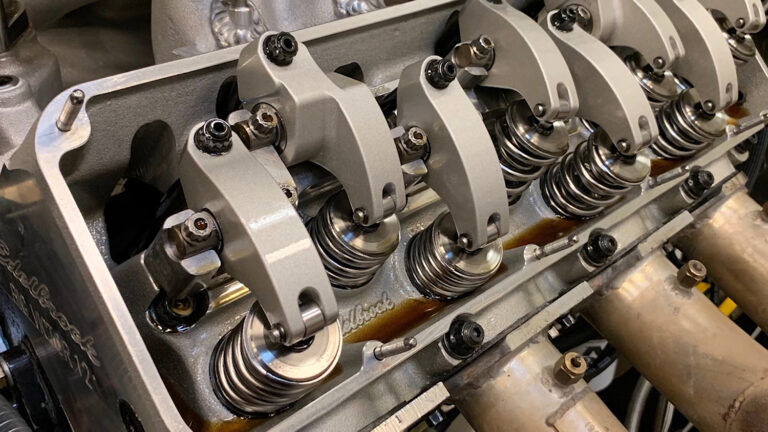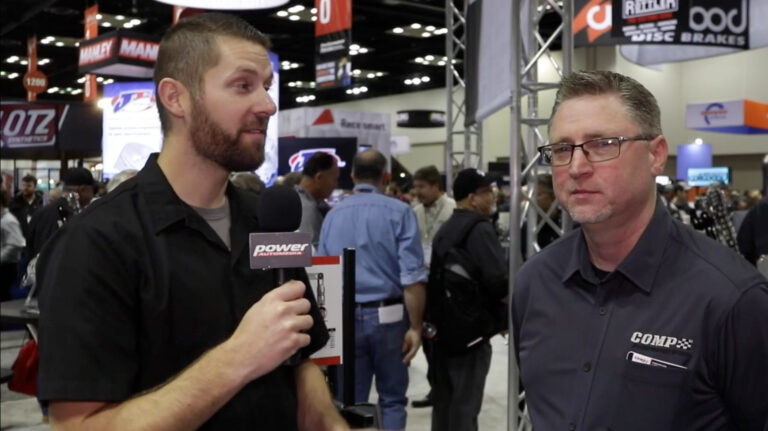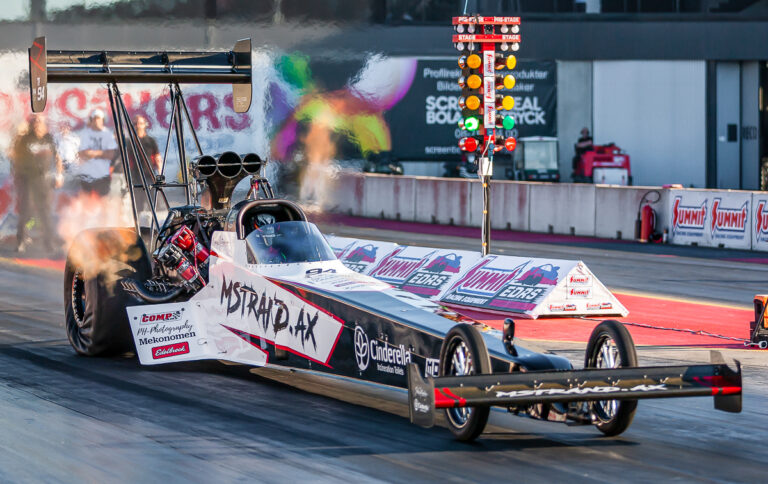When announced in 2019 for the 2020 model year, the naturally aspirated Ford Godzilla V8 engine perked the ears of many enthusiasts across the globe. The Godzilla is the largest displacement gasoline engine powering Ford’s lineup of three-quarters and one-ton heavy-duty trucks like the Ford E-Series, F250, F350, and F450 Super Duty series. At 7.3 liters, the surprising news is that it is Ford’s first overhead valve (OHV)/pushrod engine in quite a while.
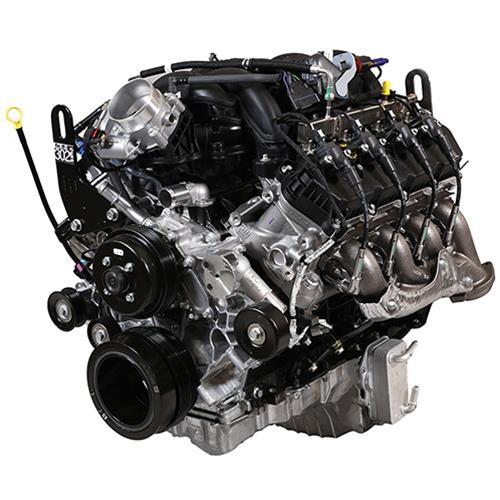
Ford fans were immediately excited about the announcement of a crate program and the smaller exterior dimensions due to the OHV configuration. Despite its larger displacement, the Godzilla’s footprint is slightly larger than the 351 Windsor but smaller than the 385-series 460 engine. Though it is taller than a modular overhead-cam engine, it is thinner measured from the outside of the heads, making it a great swap candidate for racers and classic cars.
With different power and economy ratings from the factory, the highest-rated factory-tuned configuration in the Ford Super Duty (F250/350/450) sees the Godzilla making 430 horsepower at 5500 rpm and 475 lb-ft of torque at 4000 rpm. Not a slouch by any means, but the aftermarket took notice and has started offering parts to address the needs of people utilizing the engines in smaller vehicles. The Edelbrock Group is introducing several new pieces for the Godzilla to get the most out of this monster. Let’s look at some of their latest new products to consider if you are contemplating upgrades.
Godzilla Cams
Ford built the Godzilla engine with variable-valve-timing to improve performance and fuel economy. COMP Cams researched areas of improvement in the drivetrain and developed a few new cams. They offer some custom grinds in either 5150-steel or tool-steel cores, but for this article, we’ll concentrate on the three similar lobe profiles that behave like stages. The three cam profiles all pickup performance over stock but address different performance characteristics. Here is a quick rundown of each cam and what may be involved with the installation, depending on your chosen option.
Stage 1 NSR/NTR 405-201-17
The Stage 1 cam is what you might call a basic street grind. The beauty of this cam is that it is a “no springs required” (NSR) and “no tuning required” (NTR) cam. It is genuinely a drop-in-and-go option with no changes to fueling, ignition, or phaser tables needed.
This cam utilizes the full phaser sweep for excellent mileage and optimized performance without compromising durability. It requires no adjustment to the factory cam phasing or ignition timing without the need for a limiter. With only a cam swap, you can expect to gain 55 horsepower and 15 lb-ft of torque over stock. However, minimal ECU tuning will help you see the maximum potential. Testing with an optimized tune resulted in over 60 horsepower and 15 lb-ft over stock.
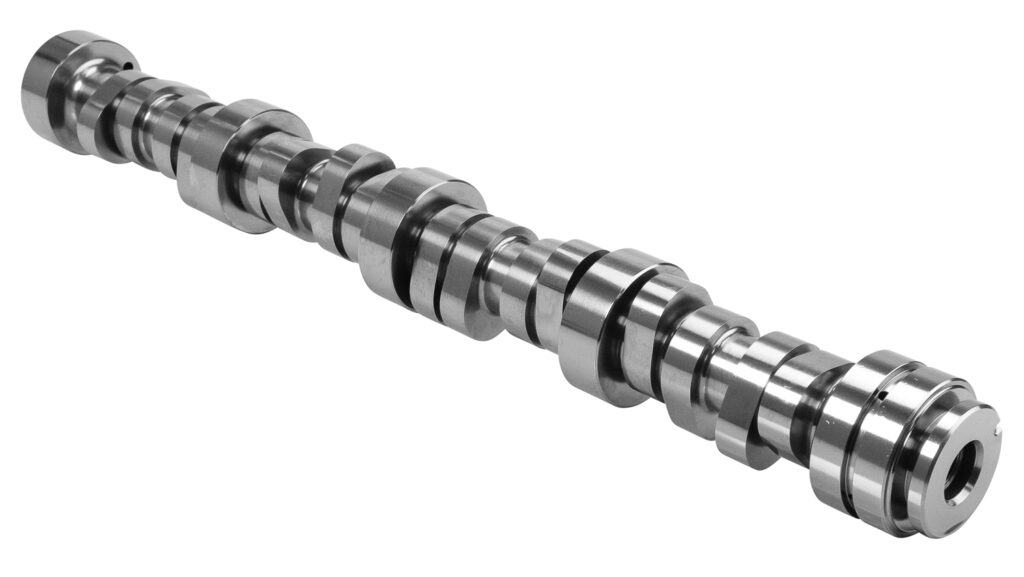
Stage 2 NSR 405-203-17
The Stage 2 cam is also an NSR cam characterized by excellent drivability while picking up in all categories. However, this cam is sure to be a tire fryer due to the torque it builds down low — right where the Godzilla doesn’t really need it. For example, the Stage 2 cam makes 540 lb-ft of torque at 2800 rpm while climbing to 600 lb-ft at 4000 rpm!
Testing with the required phaser limiter kit (P/N 5473) saw the Stage 2 net 75-plus horsepower over stock topping out at 596 at 5900 rpm. Again, stock valve springs can be used without issue, as max horsepower is made well before the red line leaving a little safe room for the rev limiter. The other cool thing about the Godzilla cams is that COMP provides a wide-open throttle phaser table to set the phaser target in the ECU to achieve max power between 2500-6500 rpm.
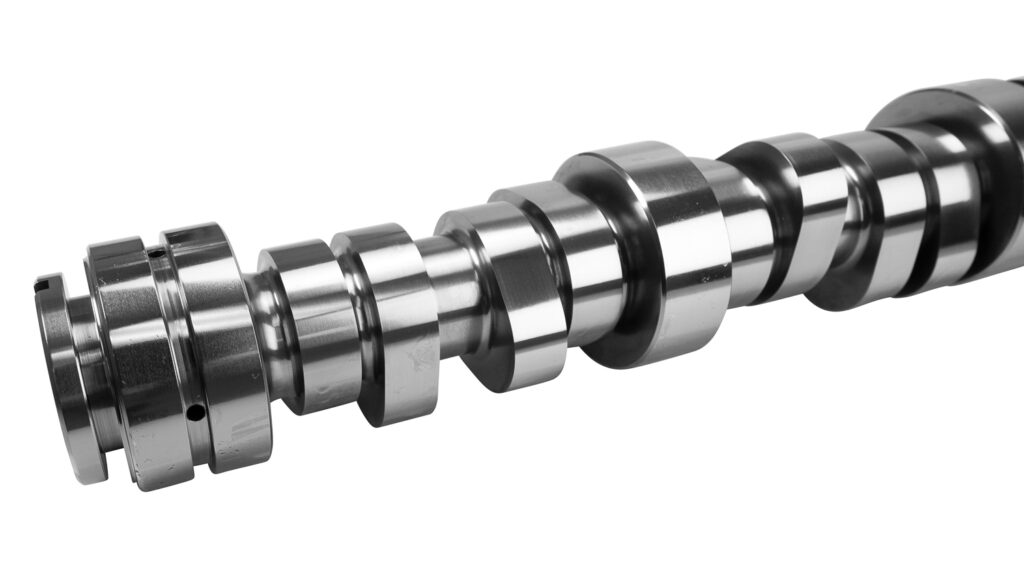
Stage 3 405-205-17
For the best all-around performance, the Stage 3 camshaft is designed for crate engines and engine swaps into lighter cars or trucks. While torque figures aren’t quite as high as the Stage 2, it makes up for it in horsepower. Excellent power can be expected from 3,000 to 6,500 rpm. With the higher valve lift of .675-inch, it does require an upgraded valve spring kit (P/N 7230GCS-KIT) and the use of either a phaser limiter (P/N 5473) or lockout kit (P/N 5474).
The Stage 3 cam offers the most horsepower. Using the phaser limiter broadens the power band, taking full advantage of both peak torque and horsepower. Testing with the limiter resulted in approximately 100 HP and 25 LB-FT over factory, making 619 HP at 6,000 rpm.

Godzilla Conical Valve Springs
COMP Cams has created a Conical Valve Spring Kit (P/N 7230GCS-KIT) for use with the Stage 3 cam providing .675 inch of valve lift. The 520 lb/in rate conical springs use round wire and feature a diameter and pitch-driven natural frequency design that increases the valve train RPM while reducing resonance concerns and decreasing spring oscillations. This allows running a more aggressive camshaft and extends spring life. The kit comes with chromemoly steel retainers but still uses stock valve seals.
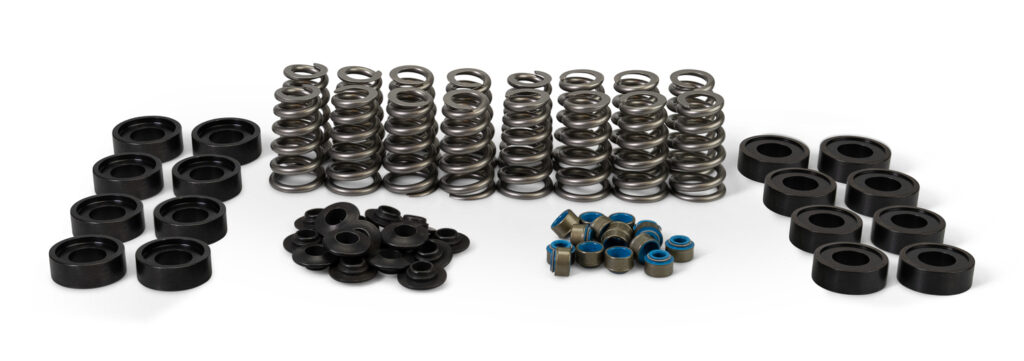
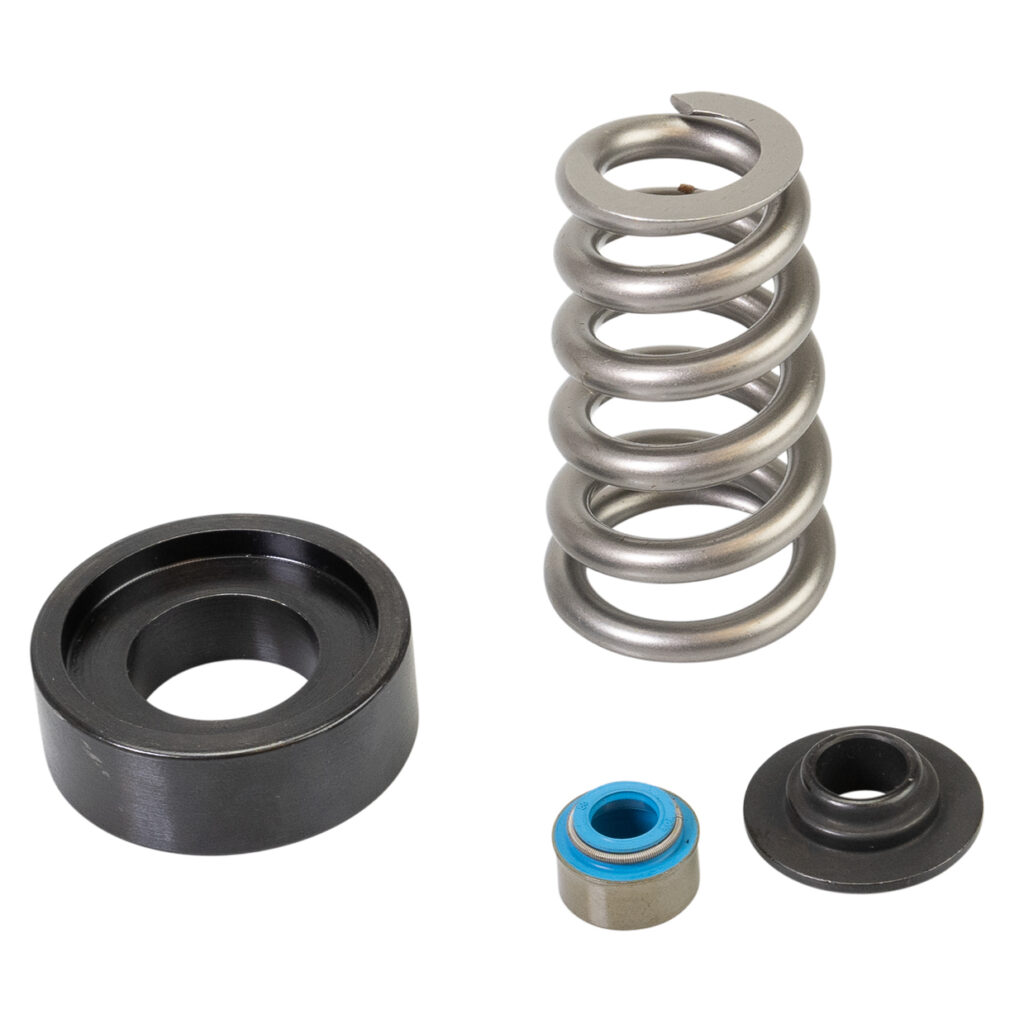
Godzilla XTS Intake
When installing a Godzilla into anything other than a truck, one of the problem spots is the throttle body location on the stock intake. It sits at the front of the engine and points upward, which could cause clearance issues under smaller vehicle hoods. Edelbrock introduced the all-new XTS Manifold (P/N 7483) to address this issue. This durable, lightweight sheet-metal intake features shorter-than-stock runners tuned for high-RPM gains in engine swap applications.
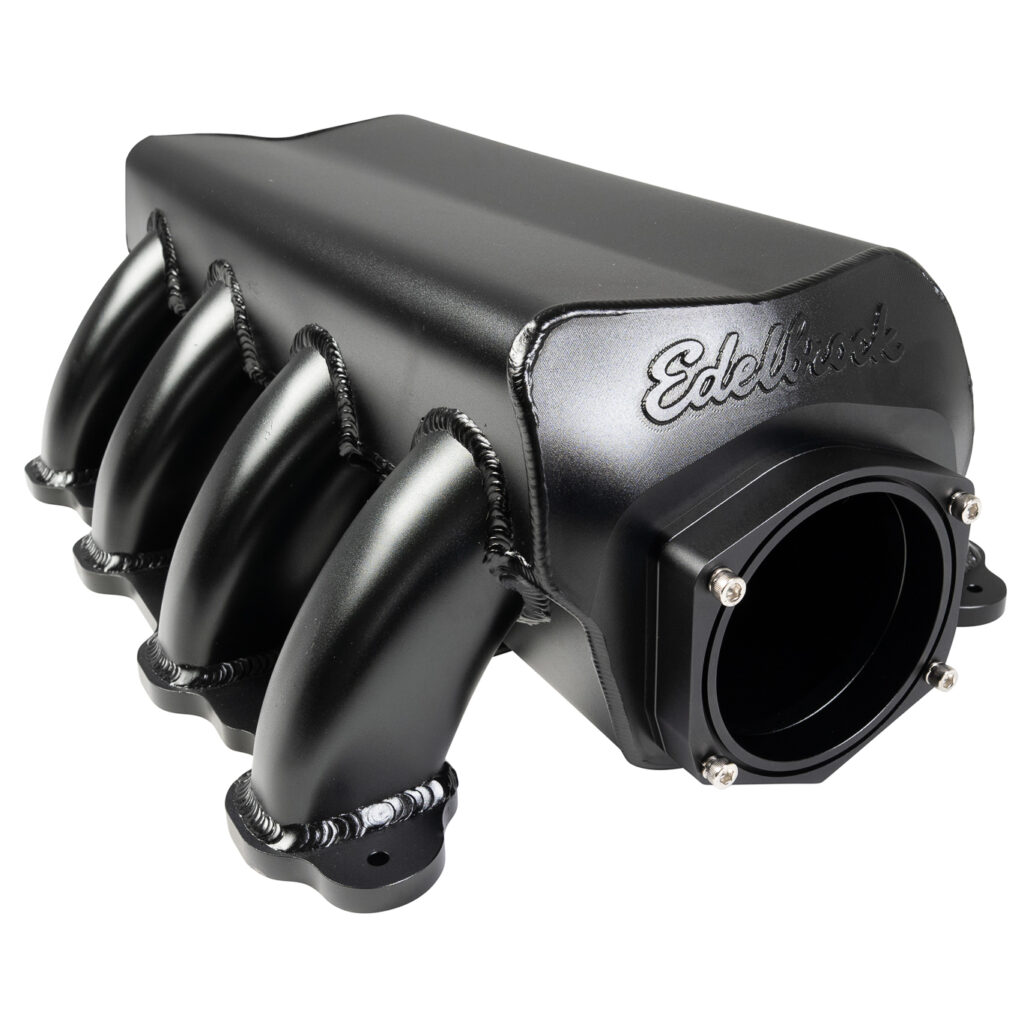
The most significant advantage of the XTS intake is the horizontal throttle-body mount. The mount accepts a 102mm throttle body and allows the air cleaner to be positioned lower in the engine bay (however, an elbow is available if you want or need to keep it in the stock location). The intake is finished in a highly attractive black powder-coat finish with billet flanges for strength and consistent sealing with heads. All the standard vacuum connections are found on the rear of the manifold, complete with the mounting and vacuum take-off hardware.
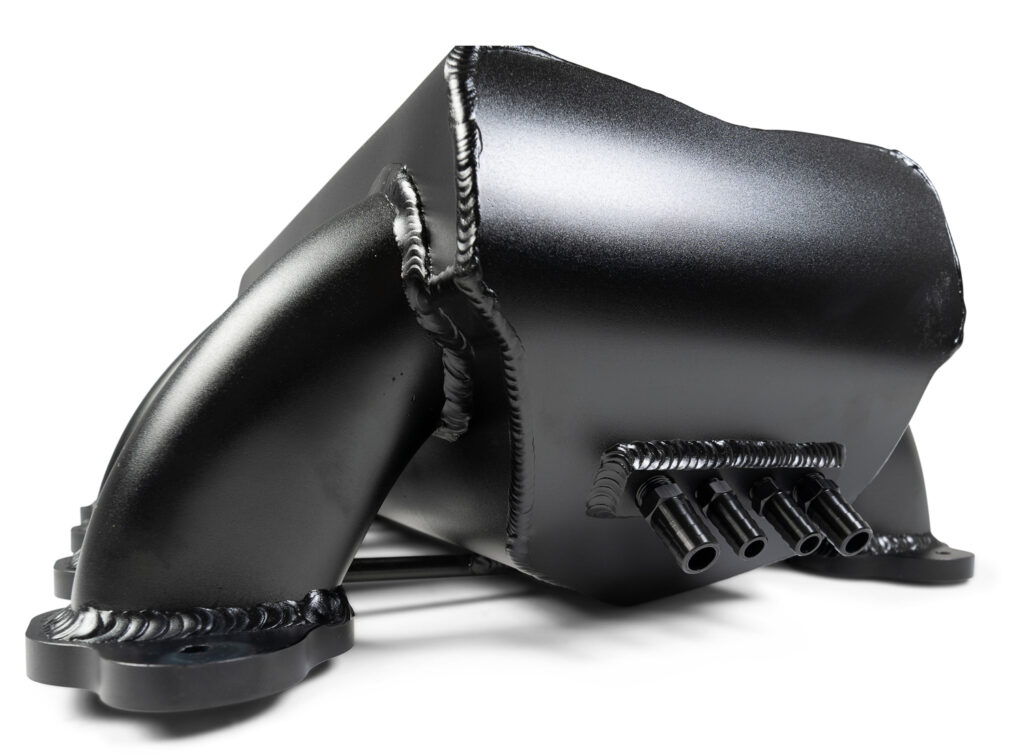

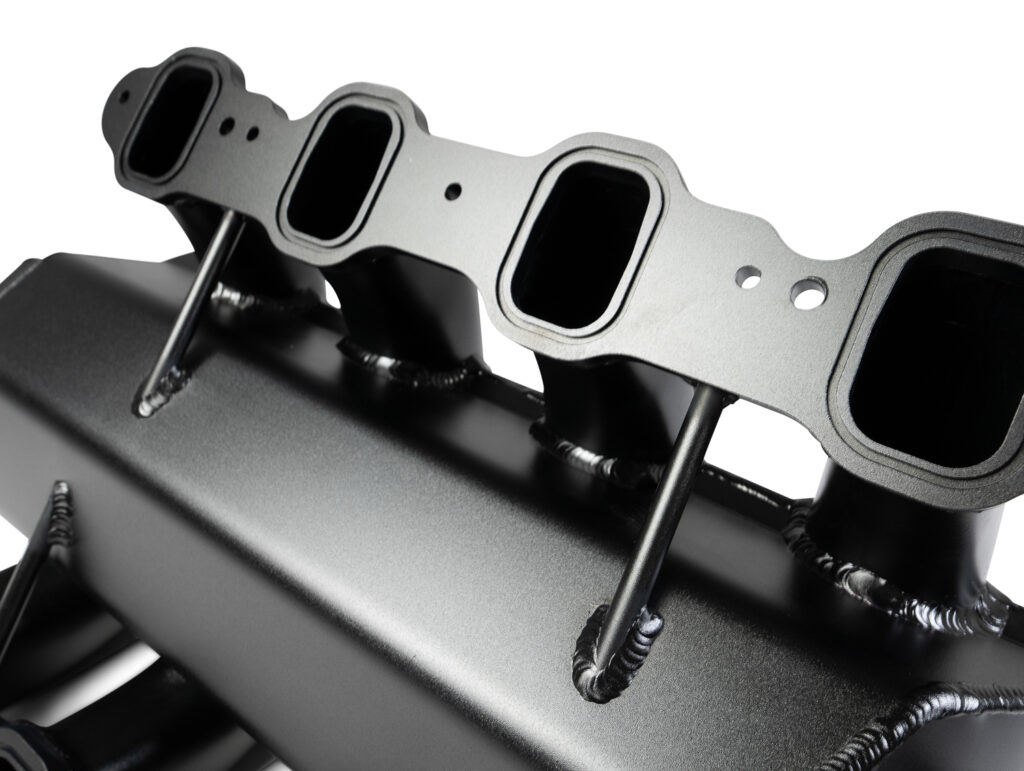
This short-runner XTS intake favors high-RPM horsepower and pairs well with a custom cam designed for high-RPM performance, especially in boosted applications. If you’re swapping an engine into a smaller vehicle where hood clearance is an issue, the XTS intake’s horizontal throttle body mount should allow you to get everything under there. Can you imagine a blacked-out engine with matching powder-coated twin-turbo piping? Talk about making a statement. Look for the XTS on Edelbrock’s website soon.
Godzilla Phaser Limiter, Lockout, and Socket Tool
Limiter
As mentioned above, the Phaser Limiter Kit (P/N 5473) restricts the phaser motion for high-performance camshaft use. The kit includes a tool that allows simultaneous compression of the phaser spring in Ford’s 7.3L Godzilla engines and ensures the spring lock engages at its optimal location.

Installation of the included limiter plug provides the necessary valve clearance for a high-performance camshaft while retaining the benefits of VVT technology. Combining this modification with more aggressive camshaft profiles has resulted in significant upper-RPM gains without sacrificing bottom- or mid-range performance. You get the best of both worlds. Also included in the kit is a special socket necessary to remove the factory camshaft phaser retaining bolt.

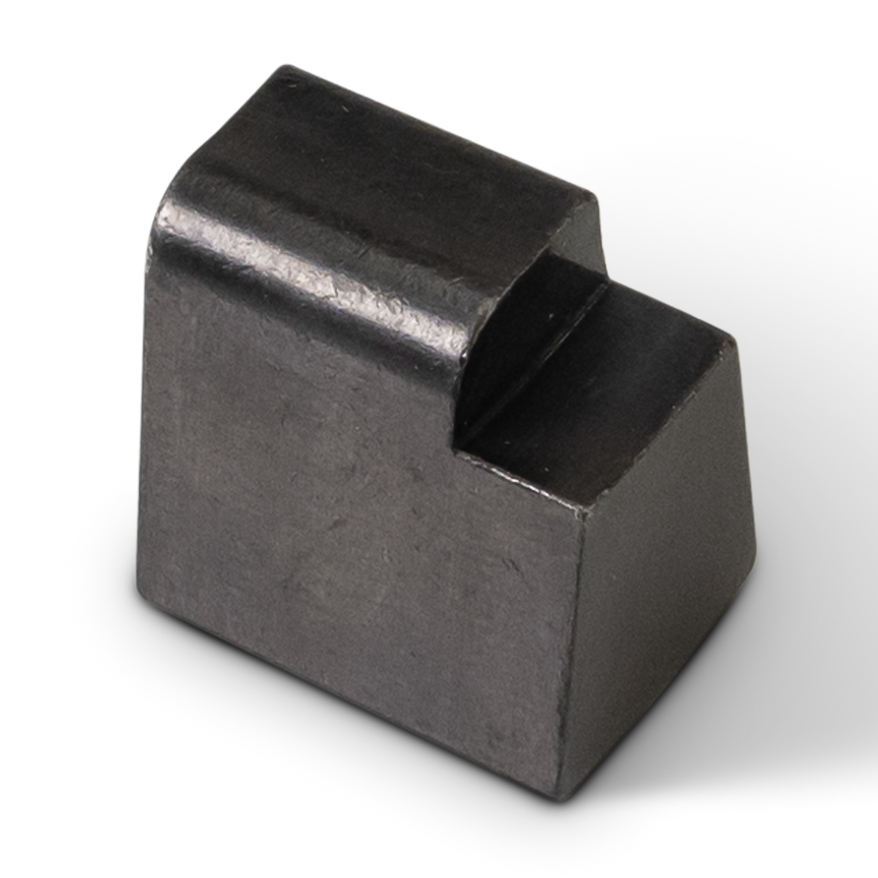
Lockout
The Cam Phaser Lockout Kit (P/N 5474) eliminates variable valve timing (VVT) to enable larger cams to be installed for even more significant horsepower increases. The phaser lockout prevents VVT from moving the camshaft installed centerline while maximizing the piston-to-valve clearance. The lockout is also for those with an ECU that doesn’t support VVT or a racer who wishes to keep tuning more consistent. Custom tool-steel users want to keep VVT at bay so they don’t run into piston-to-valve clearance issues due to a mechanical failure, allowing them to put in the biggest possible cam. A tool is included for easier installation, as is the special socket necessary to remove the factory camshaft phaser retaining bolt.


Socket Tool
If upgrading cams, do yourself a favor and save yourself a major headache by getting the Phaser Socket Tool (P/N 5475). It is a special 16-point, 22mm socket to fit a ½-inch drive ratchet necessary to remove the camshaft phaser bolt on Godzilla engines. This socket has proven to be challenging to find. Removing the bolt without this socket might be possible, but chances are you will wreck the bolt’s head. Like the guy with a lift or trailer, you can now be the go-to guy amongst your friends for this specialized socket.
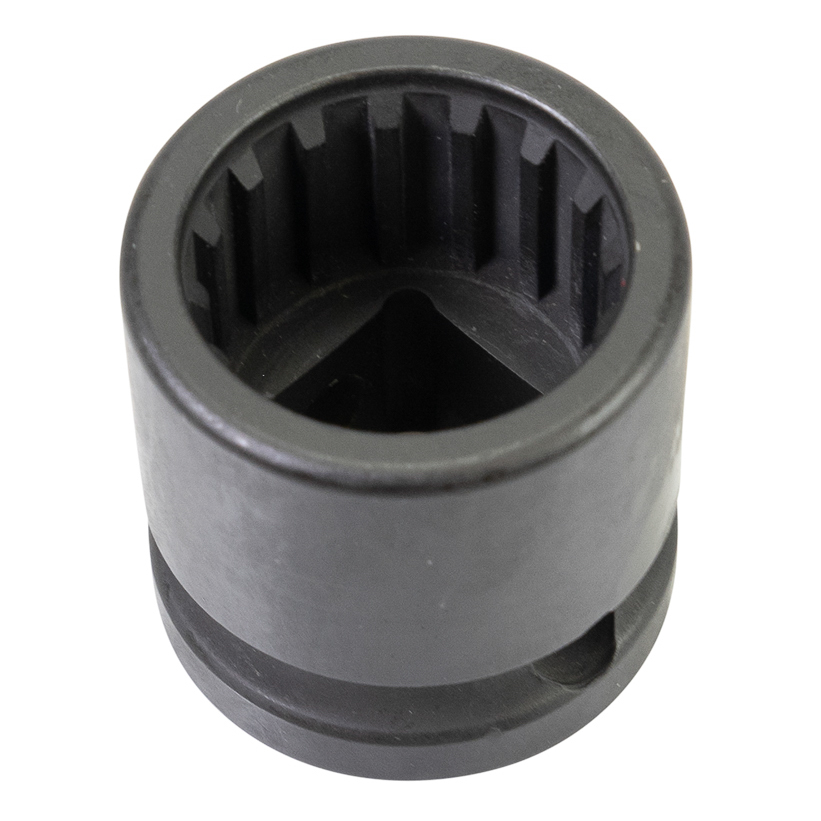

Godzilla Over The Horizon
Relatively speaking, Ford’s Godzilla engine is just a baby with only three years in production. The aftermarket is still looking for ways to modify it for performance or economy. There is chatter on the internet of cars being built with the new powertrain, so there are sure to be many uses for this rather versatile engine. One area that appears to have significant room for performance improvement is the cylinder heads. They can be ported to breathe better, but we’re sure several aftermarket racing companies are developing heads for this application.
Edelbrock was among the first to develop an intake option for the Godzilla. Still, the intake is another area where the aftermarket will work to squeeze extra performance as more people adopt the 7.3-liter for engine swaps. Like every other market, supply is dictated by demand more than an “if you build it, they will come” scenario. As more of these monsters reach into all realms of racing and performance, there will be enthusiasts and companies looking to stretch the capabilities of what they can do.


